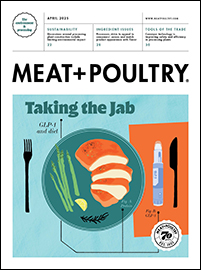“The NBAF laboratory will provide the nation with cutting edge, state-of-the-art, lab capabilities and help protect our food supply and the nation’s public health,” Johnson said. “NBAF addresses a serious vulnerability. The economic impact of a bio agricultural threat — deliberate or natural — could have a substantial effect on the food supply of this nation and have serious human health consequences. We will soon be able to ensure availability of vaccines and other rapid response capabilities to curb an outbreak. With the NBAF, our nation will have the first Bio Level 4 lab facility of its kind — a state-of-the-art bio-containment facility for the study of foreign animal and emerging diseases.”
The NBAF is expected to be completed and fully operational in 2022. The $1.25 billion facility will feature a 570,000-sq.-ft. biocontainment facility for the study of foreign animal and emerging zoonotic (transmitted from animals to humans) diseases that threaten animal agriculture and public health in the United States.
“This innovative new facility is capable of producing the research needed to protect our nation’s farmers, food supply, public health and the rural economy,” Vilsack said. “It has been a national priority for USDA, DHS, and our other partners as we work to replace aging facilities.”
In addition to Johnson and Vilsack, other individuals on hand for the groundbreaking were DHS Undersecretary for Science and Technology Reginald Brothers, Kansas Gov. Sam Brownback, Sens. Pat Roberts and Jerry Moran of Kansas, Reps. Tim Huelskamp, Kevin Yoder and Lynn Jenkins of Kansas, Mayor of Manhattan Karen McCulloh, and Kirk Schulz, president of Kansas State Univ.
The NBAF will replace the Plum Island Animal Disease Center (PIADC) in New York, providing capabilities that exceed those of PIADC. Specifically, the NBAF will feature a maximum biocontainment (ABSL-4) laboratory space. The first laboratory facility in the United States of its kind, the facility will allow researchers to study zoonotic diseases that affect livestock and other large animals.
The NBAF also will be a strategic national asset, providing modern laboratory space for the DHS and the USDA to carry out complementary missions. The key functions of the NBAF laboratory space will include basic research, sample receipt testing and diagnosis, veterinarian training, countermeasures and vaccine candidate development, and vaccine efficacy trials.


